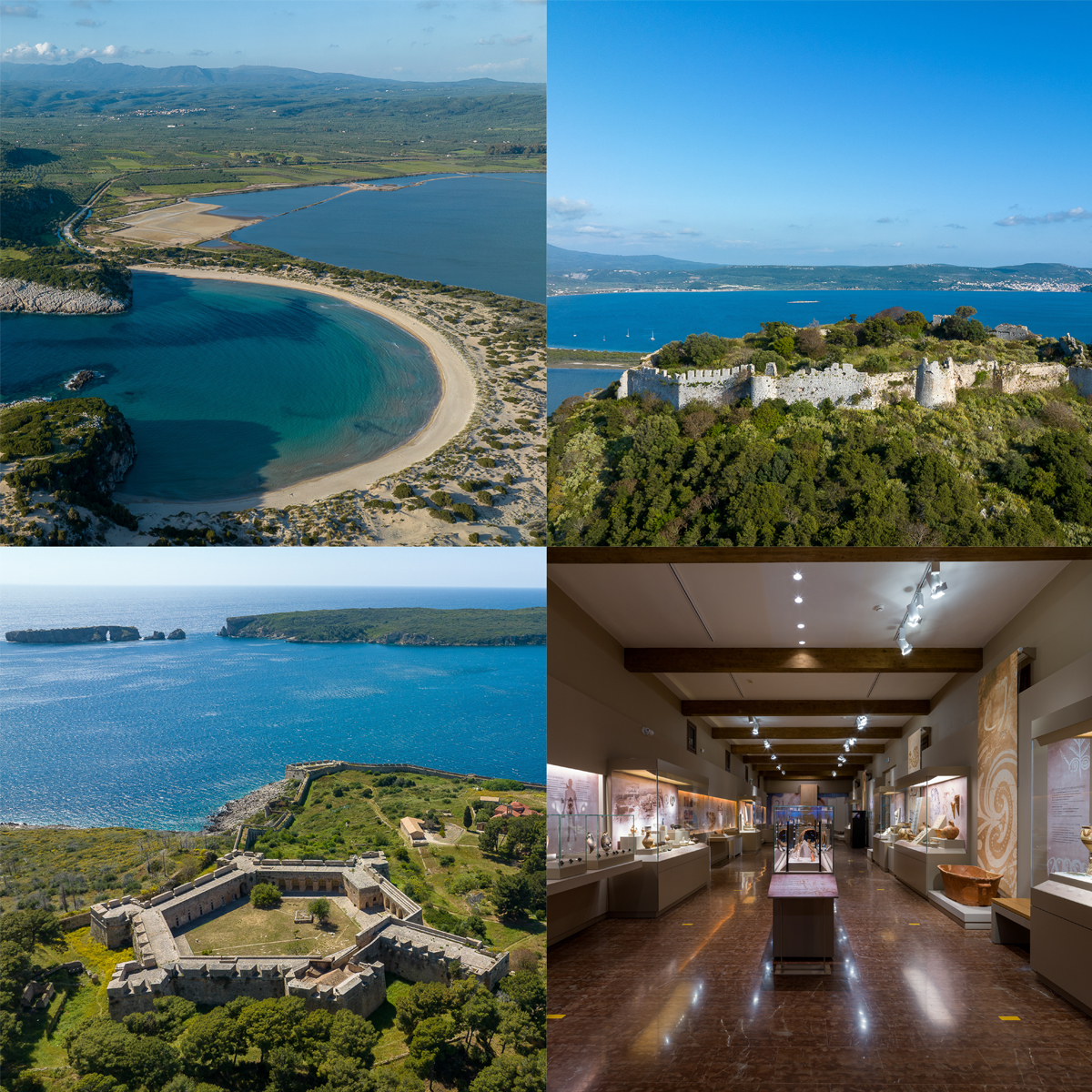The idyllic bay of Navarino, the most beautiful bay in the world, as Henry Schliemann called it, has attracted human habitation since prehistoric times. Prehistoric settlement and burial remains (4500 -1060 BC) have come to light in various locations of the bay of Voidokoilia. The most noteworthy among them is the Mycenaean tholos tomb known as the ‘Tomb of Thrasymedes’, son of Nestor. It was built in direct line of sight with the Neolithic and Mycenaean “Cave of Nestor”, which is located on the peninsula of Koryphasio, below the medieval castle of Paleokastro. The tholos tomb of Voidokilia was built on the location of an earlier Middle Helladic burial tumulus, which was formed on the building remains of an Early Helladic settlement. This was one of the most recognisable places of memory for the ancient Messenians and a characteristic example of a site where ancestor and hero worship were practised in historical times. The area around Paleokastro was inhabited from the Classical to the early Byzantine period and is identified with Pylos of historical times. Extensive cemeteries with burials and pyres of the Hellenistic and Roman periods were discovered at the foot of the hill of Prophet Elias and in the area of Tragana and the lagoon of Divari, which is a wetland where many species of migratory birds find shelter. The medieval castle-city of Port de Jonc (Palaio/old Navarino), built by the Franks in the 13th century, dominates the site to this day. Τypical examples of medieval fortification architecture, both Palaiokastro and Niokastro in Pylos, reflect the historic development of the region from the Middle Ages to modern times.


